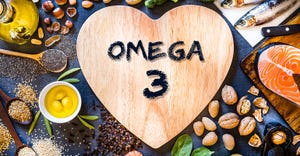Natural Products Insider: Then and now — Creatine investigations
Just as it was in 1998, the dietary supplement industry must continue to ensure its products are safe and continue to defend its products when their safety is prematurely or inaccurately questioned, writes Jon Benninger, vice president and market leader at Informa Markets.
January 6, 2023
.png?width=850&auto=webp&quality=95&format=jpg&disable=upscale)
This series looks back at the stories we were covering in Natural Products Insider 25, 20, 15, 10 and 5 years ago this month. In addition to providing some interesting history, I explore why these stories are still relevant today.
Then (January 1998): Twenty-five years ago, in January 1998, we reported FDA was investigating the possible role of creatine supplementation in the deaths of three NCAA wrestlers who died during rigorous workouts to lose weight.
The situation resulted in widespread media coverage, including stories in USA Today and Sports Illustrated questioning weight loss techniques in the sport, and the safety of creatine use. This situation was unfolding at the same time steroid use in sports was getting wide attention and the safety of ephedra and ephedrine alkaloids was being questioned.
Reports indicated the athletes were wearing rubber suits and sweat suits while exercising, and one medical examiner’s report ruled the official cause of death of one of the athletes to be heat stroke. Two industry trade associations, the Council for Responsible Nutrition (CRN) and National Nutritional Foods Association (now the Natural Products Association, or NPA), responded with statements defending the safety of creatine supplementation.
Coverage on the television program “Primetime Live” questioned the use of rubber suits but did not reference creatine. Later that year, in April 1998, FDA stated creatine was not a primary cause or major factor in the deaths.
Now: These events from a quarter-century ago are relevant today because the safety of supplement use is still a topic of discussion. Most recently, white mulberry leaf was cited as a potential contributor to the death of Lori McClintock, wife to U.S. Rep. Tom McClintock. The story was widely reported in the media, with suggestions that dietary supplement safety was a factor.
Later reporting challenged this notion, indicating the attribution to white mulberry was not supported and the white mulberry purportedly found in McClintock’s system was a leaf of the plant, which would not have come from a dietary supplement.
Just as it was in 1998, the dietary supplement industry must continue to ensure its products are safe and continue to defend its products when their safety is prematurely or inaccurately questioned. And if a safety issue does arise due to quality control, adulteration or other issues, industry must continue to respond quickly and transparently.
About the Author(s)
You May Also Like






.png?width=800&auto=webp&quality=80&disable=upscale)